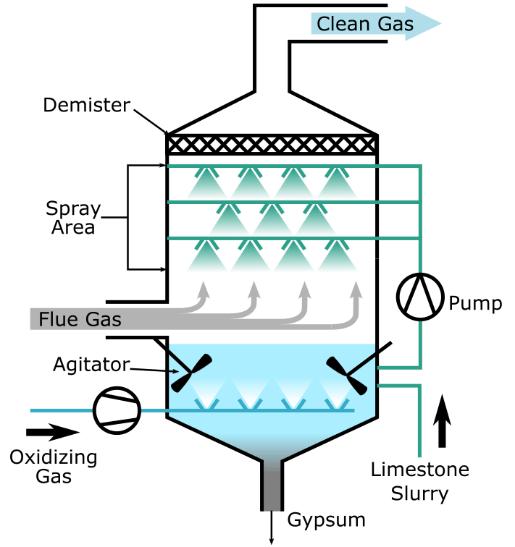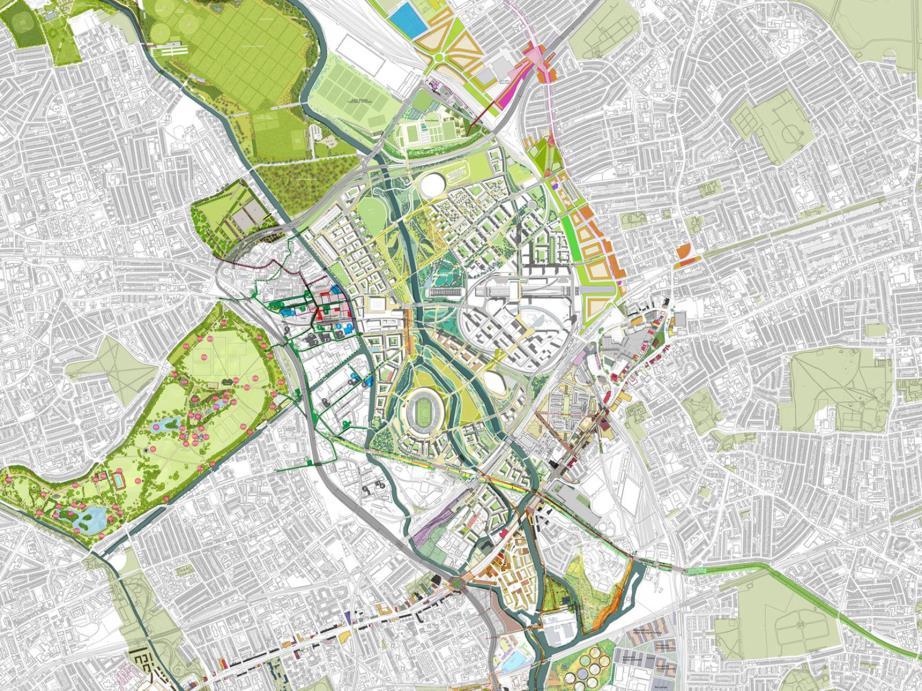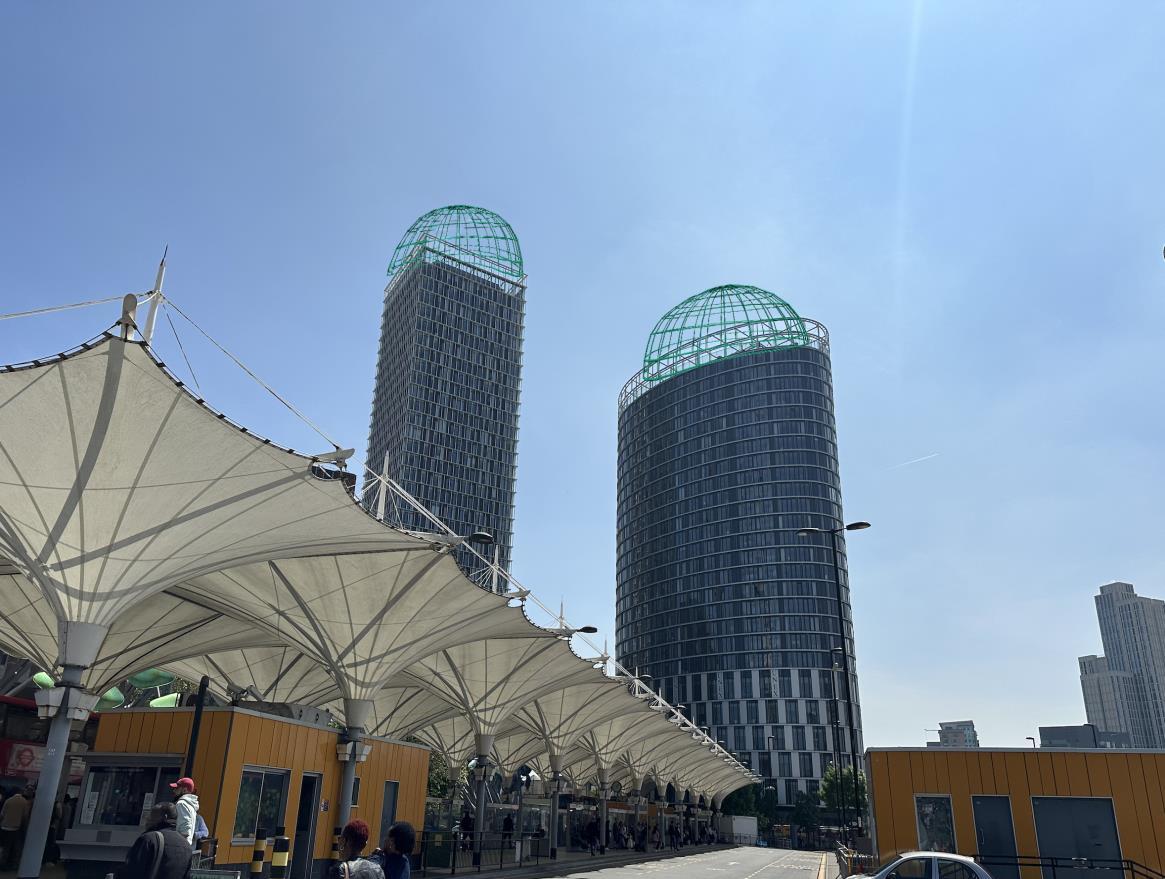Eco-structure for building emission reduction
Study in London-UK
Design For Change
Amirhossien Foroutani
22025259
Climate change
(OCHA, 2020)
United nations office for the coordination of humanitarian affairs
Climate change
Climate change refers to long-term shifts in temperatures and weather patterns. Such shifts can be natural, due to changes in the sun’s activity or large volcanic eruptions. But since the 1800s, human activities have been the main driver of climate change
Eco-structure for building emission reduction
Research Background Problem Statement strategy design
Eco-structure for building emission reduction



Climate change - importance












(FOE,

2023)
Friends of the Earth


Research Background Problem Statement strategy design
Anthropocentric crisis
Risk of climate change = human activities
Eco-structure for building emission reduction
Research Background Problem Statement strategy design
Human Activities
Human activities
Burning fossil fuels
The combustion of fossil fuels for energy production, transportation, and industrial processes releases greenhouse gases (such as carbon dioxide) into the atmosphere, leading to climate change and global warming.
Industrial activities
Industrial activities release pollutants into the air, water, and soil, including harmful chemicals, heavy metals, and toxic waste, which negatively impact human health and ecological systems.
Resource depletion and over consumption


Overconsumption and depletion of natural resources, including water, fossil fuels, minerals, and forests, leading to environmental degradation, pollution and climate change.
Over population
The rapid increase in human population, exceeding the Earth's carrying capacity and putting strain on resources, infrastructure, and ecosystems which leads to climate crisis and pollutions.
Deforestation & land degradation
large-scale clearing of forests for agriculture, logging, and urbanization, resulting in habitat loss, carbon dioxide emissions, and disruption of ecosystems and climate change.
Unsustainable Mining Practices
Extraction of minerals and metals using destructive methods, such as open-pit mining and mountaintop removal, leads to habitat destruction, soil erosion, water contamination, and displacement of communities.
(OCHA, 2020)
United nations office for the coordination of humanitarian affairs


Eco-structure for building emission reduction Research Background Problem Statement strategy design
Human activities
Pollution = human activities
Eco-structure for building emission reduction
Research Background Problem Statement strategy design
Pollution
pollution
The World Health Organization (WHO) defines pollution as the introduction of contaminants or harmful substances into the environment, resulting in adverse effects on the natural ecosystem, living organisms, and human health. Pollution can take various forms and can occur in different environments, including air, water, and soil.
Eco-structure for building emission reduction
Research Background Problem Statement strategy design
(WHO, 2022) World health organization
(UNEP, 2022)
United nations Environment programme
Contamination of the air by harmful substances, including gases, particulate matter, and pollutants, that can be harmful to human health and the environment.
Contamination of water bodies, including rivers, lakes, oceans, and groundwater, by the introduction of harmful substances, such as chemicals, toxins, pathogens, or pollutants, which can negatively impact water quality, aquatic life, and human well-being.
Contamination of the environment by radioactive substances, such as those released from nuclear accidents, nuclear waste, or nuclear weapons testing, which can pose health risks to living organisms and ecosystems.
Contamination of soil by pollutants, including chemicals, heavy metals, pesticides, or improper waste disposal, which can lead to soil degradation, reduced fertility, and potential harm to plants, animals, and humans.
The accumulation of plastic waste in the environment, particularly in oceans and waterways, which can harm marine life, damage ecosystems, and have potential implications for human health.
Eco-structure for building emission reduction Pollution Research Background Problem Statement strategy design Air pollution Water pollution Radioactive pollution Soil pollution Plastic pollution Environmental pollutions
Eco-structure for building emission reduction The process of disasters Research Background Problem Statement strategy design 01 Human Activities 02 03 04 Pollutions Anthropocentric crisis Climate change

Eco-structure for building emission reduction Research Background Problem Statement strategy design 01 Human Activities 02 03 04 Pollutions Anthropocentric crisis Climate change Mitigate pollution = Less risk of climate change Preventing of disasters
Preventing of disasters - pollution
The UK – rate of urgency
(Gov.uk, 2016)
The UK government official website, emergency preparedness
Air Pollution: High urgency due to its detrimental effects on public health, particularly in urban areas It contributes to respiratory diseases and has significant economic and social costs
Water Pollution: Medium urgency, especially for protecting freshwater sources and aquatic ecosystems. It affects drinking water quality, aquatic life, and ecosystem balance.
Radioactive Pollution: Low urgency, as radioactive pollution is generally well regulated. Strict safety measures and proper disposal of radioactive waste are necessary to prevent longterm environmental and health risks.
Soil pollution: Moderate urgency, as it affects agricultural productivity, soil health, and can lead to contamination of food and water sources if not addressed.
Plastic Pollution: medium urgency due to its widespread and persistent nature, impacting marine ecosystems, wildlife, and even entering the human food chain.
Eco-structure for building emission reduction Research Background Problem Statement strategy design
Preventing of disasters - pollution
The Risk of high rate pollution = The UK air pollution
Eco-structure for building emission reduction Research Background Problem Statement strategy design
Preventing of disasters - pollution
The UK – Air pollution division Department for environment, food and rural affairs, 2022) The UK government national statistics
Power stations
Emissions from power plants, including coal-fired power stations and gas-fired power plants.
building emissions
•Domestic heating and cooking emissions, particularly from the burning of solid fuels such as coal and wood.
•Emissions from household appliances and equipment, including gas boilers and stoves.
Industry process
•Emissions from manufacturing industries, such as chemicals, metals, and cement production.

•Industrial processes involving the use of solvents, paints, and chemicals.
•Emissions from road vehicles, including cars, buses, trucks, and motorcycles.
Transport system Agriculture Lowest pollution footprint
•Aircraft emissions, including nitrogen oxides (NOx) and particulate matter.
•Shipping and maritime activities contributing to emissions near coastal areas.
Eco-structure for building emission reduction Research Background Problem Statement strategy design
Preventing of disasters - pollution
The UK – Air pollution element - GHG Department for environment, food and rural affairs, 2022) The UK government national statistics
Air pollution
•particulate matter (PM10 and
•nitrogen oxides (NOx)
•ammonia (NH3)


•non-methane volatile compounds (NMVOCs)

•sulphur dioxide (SO2)
•Carbon monoxide (CO)
Eco-structure for building emission reduction Research Background Problem Statement
Preventing of disasters - pollution
The UK – Air pollution element - Contributors Department for environment, food and rural affairs, 2022) The UK government national statistics
•sulphur dioxide (SO2)
Primarily emitted from burning fossil fuels, especially high-sulphur coal and oil.
ammonia (NH3)
Emitted mainly from agricultural activities, particularly livestock farming and fertilizer application.
•Carbon monoxide (CO)
Produced by incomplete combustion of fossil fuels and biomass, primarily from vehicles and industrial processes.
•non-methane volatile organic compounds (NMVOCs)
organic chemicals that vaporize at room temperature, released from sources such as solvents, paints, and vehicle emissions.
•particulate matter (PM10 and PM2.5)
Tiny solid or liquid particles suspended in the air. This includes PM2.5 (fine particles) and PM10 (coarse particles).
•nitrogen oxides (NOx)
Produced mainly from combustion processes, particularly from vehicles and power generation.
Eco-structure for building emission reduction Research Background Problem Statement strategy design
Preventing of disasters - pollution
The UK – Air pollution element - circumstances Department for environment, food and rural affairs, 2022) The UK government national statistics


Present circumstances
Future circumstances
Eco-structure for building emission reduction Research Background Problem Statement strategy design
Preventing of disasters - pollution
The UK – Air pollution element - prediction Department for environment, food and rural affairs, 2022) The UK government national statistics
The UK future circumstances = risk of air pollution
Eco-structure for building emission reduction Research Background Problem Statement strategy design
Preventing of disasters - pollution
The UK – Air pollution element – effect on Human health Department for environment, food and rural affairs, 2022) The UK government national statistics
Human exposure
•sulphur dioxide (SO2)
•Respiratory symptoms, including coughing, wheezing, and shortness of breath.
•Aggravation of asthma and other respiratory conditions.
•Increased risk of cardiovascular diseases and respiratory infections.
ammonia (NH3)
•Irritation of the eyes, nose, and throat.
•Respiratory issues, such as coughing and difficulty breathing.
•Aggravation of asthma and other respiratory conditions.
•Carbon monoxide (CO)
•Reduced oxygen-carrying capacity of the blood, leading to oxygen deprivation.
•Headaches, dizziness, and confusion.
•Chest pain and increased risk of heart problems.
•non-methane volatile organic compounds (NMVOCs) organic chemicals that vaporize at room temperature, released from sources such as solvents, paints, and vehicle emissions.
•particulate matter (PM10 and PM2.5)
•Respiratory issues, including coughing, wheezing, and shortness of breath.
•Aggravation of asthma and other respiratory conditions.
•Increased risk of cardiovascular diseases and premature death.
•nitrogen oxides (NOx)
•Respiratory problems, including inflammation of the airways.
•Increased risk of respiratory infections and asthma symptoms.
•Aggravation of existing cardiovascular conditions.
Eco-structure for building emission reduction Research Background Problem Statement strategy design
Preventing of disasters - pollution
The UK – Air pollution contributor – Governmental plan Department for environment, food and rural affairs, 2022) The UK government national statistics
Industrial processes
FGD system :The Flue Gas Desulfurization (FGD) system is used in industrial processes in the UK to reduce the emissions of sulfur dioxide (SO2) from power plants and other facilities that burn fossil fuels. It is an air pollution control technology that aims to minimize the environmental impact of industrial activities.
Transport system
ULEZ : These zones restrict access to high-polluting vehicles in specific areas.
CAZ : Clean Air Zones have been established in certain cities to tackle air pollution. They may impose charges or restrictions on the most polluting vehicles, encouraging the use of cleaner alternatives.
Evs : he UK government has introduced various incentives to promote the uptake of electric vehicles, including grants for purchasing EVs, expanding charging infrastructure, and offering tax incentives.
UK government policy
Building emissions
RHI : is a government scheme that provides financial support to nondomestic and domestic renewable heat installations, including biomass boilers. It offers long-term payments to eligible participants based on the amount of renewable heat generated.
GIG : They provide financing and support for various renewable energy initiatives, including biomass boilers, wind farms, solar power, and energy storage projects.
Power stations
FGD system :The Flue Gas Desulfurization (FGD) system is used in industrial processes in the UK to reduce the emissions of sulfur dioxide (SO2) from power plants and other facilities that burn fossil fuels. It is an air pollution control technology that aims to minimize the environmental impact of industrial activities.
Eco-structure for building emission reduction Research Background Problem Statement strategy design
Preventing of disasters - pollution
The UK – Air pollution contributor – Governmental plan Department for environment, food and rural affairs, 2022) The UK government national statistics
“In 2021, domestic combustion, specifically the burning of wood in stoves and fires, was a significant source of particulate matter emissions. It accounted for 16% of PM10 emissions and 27% of PM2.5 emissions. Coal, which used to be the primary contributor, now only represents 13% of emissions. In contrast, wood burning accounted for 75% of PM2.5 emissions from domestic combustion in 2021. Emissions from domestic wood burning have increased by 124% between 2011 and 2021, now comprising 21% of total PM2.5 emissions.”


Eco-structure for building emission reduction Research Background Problem Statement strategy design
Preventing of disasters - pollution
The UK – Air pollution contributor – building emissions Department for environment, food and rural affairs, 2022) The UK government national statistics

Buildings heating systems are another contributors of air pollution. The heating system requires natural gas for their boiler systems. The system burn natural gas and release a vast amount of carbon monoxide to the air and as a result it becomes another contributor of air pollution.

Eco-structure for building emission reduction Research Background Problem Statement strategy design
+ +
Preventing of disasters - pollution
The UK – Air pollution contributor
Domestic combustion/building emission = contributor of air pollution by releasing PM10, PM 2.5 and Carbon monoxide
Eco-structure for building emission reduction Research Background Problem Statement strategy design
Preventing of disasters - pollution
The UK – Air pollution– main question
Research question
What are the key factors contributing to the absence of practical plans for mitigating air pollution through large building heating systems, and how can these obstacles be overcome to develop effective strategies?
Can Flue Gas Desulfurization (FGD) systems, proven to be effective in mitigating air pollution from power stations and industries, be adapted and utilized for large buildings in the UK as a practical solution for reducing air pollution?
Eco-structure for building emission reduction Research Background Problem Statement strategy design
Eco-structure for building emission reduction
Strategy – UK pollution map

Centerforcities.org, 2020)
Cities outlook 2020
UK ambient air quality: NO2 and PM2.5 annual mean concentration
Highest amount of air pollution = London
Research Background Problem Statement strategy design
Eco-structure for building emission reduction
Strategy – London buildings
(skyscrapercenter.com, 2023) Skyscraper center data base
According to skyscraper center database on April 2023: there are 103 completed building in London which are more than 150 meters tall. Many more are under construction or planning stages. The main system of heating is working by natural gas.



Research Background Problem Statement strategy design
Strategy – London buildings – Heating system
(department for levelling up, housing and communities, 2023)
The UK Hvac standard – a guild to air conditioning


The process of boiler system

1.Fuel Supply: Natural gas is supplied to the boiler from a gas line connected to the building's utility gas network.
2.Combustion Process: The burner, located within the combustion chamber of the boiler, mixes the natural gas with air to create a controlled combustion process. The burner ignites the mixture, creating a flame that generates heat energy.
3.Heat Exchanger: The heat energy produced by the combustion process is transferred to the water circulating within the boiler's heat exchanger. The heat exchanger consists of a series of pipes or tubes that come into contact with the hot combustion gases, allowing heat transfer to occur.
4.Circulation: As the water absorbs heat from the combustion gases, it becomes heated and is circulated through pipes or radiators to distribute the heat throughout the building. In some systems, a circulating pump may be used to facilitate the movement of the heated water.
5.Temperature Control: The boiler system incorporates controls to maintain a desired temperature within the building. These controls monitor the water temperature and adjust the burner's fuel supply and combustion process accordingly. When the desired temperature is reached, the burner may modulate or shut off to prevent overheating.
6. extraction: the process will be ended by extraction of flue gas produced by burning natural gas through vents in the roof of the building.
Eco-structure for building emission reduction Research Background Problem Statement strategy design
Eco-structure for building emission reduction
Strategy – FGD system – industry and power stations
FGD systems located in the extraction pipes and typically employ various techniques to capture and remove SO2 from flue gases. One of the most commonly used methods is wet scrubbing, which involves passing the flue gas through an absorber tower or chamber where it comes into contact with a liquid sorbent, usually a slurry of limestone or lime. The interaction between the flue gas and the sorbent facilitates chemical reactions that convert the SO2 into a less harmful compound, such as calcium sulfate or calcium sulfite.
The key steps in the wet scrubbing process of an FGD system are as follows:
1.Absorption: Flue gas enters the absorber tower and encounters the alkaline sorbent. The SO2 in the flue gas reacts with the sorbent to form sulfite or sulfate compounds.
2.Reaction and Neutralization: The sorbent, now containing the captured SO2, undergoes chemical reactions to convert the SO2 into stable compounds. This process often involves oxidation and neutralization reactions to ensure effective removal and stabilization of the sulfur compounds.
3.Separation and Solid/Liquid Handling: The treated flue gas, with reduced SO2 content, exits the absorber tower. The spent sorbent, now laden with captured pollutants, is separated from the flue gas and processed for further treatment or disposal. This step may involve solid-liquid separation, dewatering, and subsequent handling of the generated waste products.

4.Byproduct Utilization or Disposal: Depending on the specific FGD system and regulations, the byproducts generated during the FGD process, such as gypsum (calcium sulfate), can be further processed and utilized for various applications, such as construction materials or agricultural amendments. Alternatively, appropriate disposal methods may be employed for these byproducts.
(Cordoba, 2015)
Status of Flue Gas Desulphurisation (FGD) systems from coal-fired power plants
Research Background Problem Statement strategy design
Eco-structure for building emission reduction
Strategy
FGD system = Purify Sulphur Dioxide
wet scrubbing process
CO &PM 10, 2.5
Carbon Monoxide
O2 Oxygen
FGD system = Purify carbon monoxide & PM 10, 2.5 of building heating system through photosynthesis
Research Background Problem Statement strategy design
absorption Reaction
utilization
air
Byproduct
Gypsum & clean
Sun Light CH2O Glucose
Eco-structure for building emission reduction
Strategy – photosynthesis - Microalgae
Microalgae, also known as microscopic algae, are single-celled or simple multicellular organisms that belong to a diverse group of photosynthetic microorganisms. They are typically found in aquatic environments such as oceans, lakes, and ponds. Microalgae are characterized by their small size, ranging from a few micrometers to a few hundred micrometers in diameter. These organisms are photosynthetic, meaning they can convert sunlight, carbon dioxide, and nutrients into organic compounds through the process of photosynthesis. They contain specialized structures called chloroplasts that contain pigments, such as chlorophyll, which capture light energy for photosynthesis.
Microalgae play a significant ecological role as primary producers in aquatic ecosystems, serving as a vital food source for various organisms in the food chain. They are known for their rapid growth rates and high biomass productivity, making them attractive for various applications.
Due to their unique biochemical composition, microalgae have gained attention for their potential in various industries. They can accumulate high amounts of lipids, proteins, carbohydrates, and other valuable compounds. These properties make them a promising source for biofuels, animal feed supplements, nutritional supplements, wastewater treatment, and even pharmaceuticals. The wide diversity of microalgae species offers a range of characteristics and functionalities. Researchers and industries are exploring the cultivation and utilization of specific microalgae strains with desired properties to harness their potential for sustainable applications.

(Elrayies, 2018)
Prospects for greener future
Research Background Problem Statement strategy design
for building emission reduction
Strategy – photosynthesis – Microalgae – variety

some microalgae can effectively capture and utilize carbon dioxide (CO2) and Pm10, 2.5 through photosynthesis, thus reducing the concentration of this greenhouse gas and other pollutants in the air. Here is a list of some microalgae species that have been studied for their potential in photosynthesizing and mitigating air pollution in buildings:
1.Chlorella sp.
2.Spirulina sp.
3.Scenedesmus sp.
4.Nannochloropsis sp.
5.Dunaliella sp.
6.Haematococcus sp.
7.Euglena gracilis
8.Tetraselmis sp.
9.Chlorococcum sp.
10.Porphyridium sp.
The lifespan of microalgae can vary significantly depending on the species, environmental conditions, and cultivation methods. Generally, the lifespan of microalgae ranges from a few days to several weeks or even months.
It is worth mentioning than after they use their capability for photosynthesis the become a biomass fuel which can be used as clean energy sources.
(Elrayies, 2018)
Prospects for greener future
Research Background Problem Statement strategy design
Eco-structure
Eco-structure for building emission reduction
Strategy
Strategy = Design an eco-structure equipped by microalgae in order to mitigate building-related emissions
Research Background Problem Statement strategy design
Eco-structure for building emission reduction
Design strategy
Research Background Problem Statement strategy design
the most suitable location for the design and consideration of people awareness through visual impact Step 1
a modular eco-structure useful for all types of huge buildings Step 2
requirement of microalgae for photosynthesis and purify the air Step 3
the eco-structure on top of the buildings Step 4
Find
Design
Applied
Locate
Eco-structure for building emission reduction
Design
Step 1
Find the most suitable location for the design and consideration of people awareness through visual impact

The most suitable location in London for people awareness through visual impact is Stratford Westfield.





Research Background Problem Statement strategy design
Eco-structure for building emission reduction
Design
Step 2
The best modular structure less impact on the skyline of Sphere shape





structure useful for all types of huge buildings
Eco structure
Research Background Problem Statement design
Sphere with polygon shape
Polygon dome shape
Polygon flexible dome shape
Eco-structure for building emission reduction
Design






Step 3
Applied requirement of microalgae for photosynthesis and purify the air
Water supply through pipes and pomp
Microalgae in the transparent pipes
Transparent structure for enhanced photosynthesis
Microalgae in the transparent pipes
Water supply through pipes and pomp
Transparent structure for enhanced photosynthesis


Final shape located on the vents


Problem Statement strategy design















Eco-structure for building emission reduction Research Background Problem Statement strategy design
Design
Design

Step 4

Research Background Problem Statement strategy design
Eco-structure for building emission reduction
Locate the eco-structure on top of the buildings
Design

Step 4

Research Background Problem Statement strategy design
Eco-structure for building emission reduction
Locate the eco-structure on top of the buildings
Design
Step 4

Research Background Problem Statement strategy design
Eco-structure for building emission reduction
Locate the eco-structure on top of the buildings
Eco-structure for building emission reduction
References
Cordoba, P, (2015), Status of flue gas desulphurization (FGD) systems from coal-fired power plants: overview of the physic – chemical control processes of wet limestone FGDs, Elsevier, Fuel, 274-286
Okushima, S, (2021), energy poor need more energy, but do they need more carbon? Evaluation of people’s basic carbon needs, Elsevier, ecological economics, 107081
Elrayies, G, (2018), microalgae: prospects for greener future buildings, Elsevier, Renewable and sustainable energy reviews, 1175-1191
Spolaore.P, Cassan.C, Duran.E, Isambert.a, (2006), Commercial applications of microalgaes, Journal of bioscience and bioengineering, 87-96
Song.C, Liu.Q, Qi.Y, Chen.G, Song.Y, Kansha.y, (2019), Absorption microalgae hybrid co2 capture and biotransformation strategy: review, Elsevier, International journal of greenhouse gas control, 109-117
Pagliolico.S, Valerio.R.M, Bosco.F, Mollea.C, Forgia.c, (2017), A novel photo bioreactor application for microalgae production as a shading system in buildings, Elsevier, Science direct, 151-160
Klinthong.W, Yang.Y, Huang.c, Tan.C, (2015), A review: microalgae and their application in co2 capture and renewable energy, National tsing hua university, department of chemical engineering, Taiwan, 712 - 742
Department for environment, food and rural affairs, (2021), Air pollution in the UK 2021,
Yen.H, Ho.S, Chen.C, Chang.J, (2015), review: Co2, Nox, Sox removal from flue gas via microalgae cultivation, Biotechnology journal, 829-839
Nasir.Z, Colbeck.I, (2013), particulate pollution in different housing types in a UK suburban location, Elsevier, Science of the total environment, 165-176
Department for environment, food and rural affairs, (2021), Emission of air pollutants in the UK – background
Department for environment, food and rural affairs, (2021), Emission of air pollutants in the UK – summary
Department for environment, food and rural affairs, (2021), Emission of air pollutants in the UK – nitrogen oxides (Nox)
Department for environment, food and rural affairs, (2021), Emission of air pollutants in the UK – Particulate matter (PM10 and PM2.5)
Department for environment, food and rural affairs, (2023), methods and quality processes for UK air pollutant emission statistics
Department for environment, food and rural affairs, (2021), apply for boiler upgrade scheme, overview
The End






































































